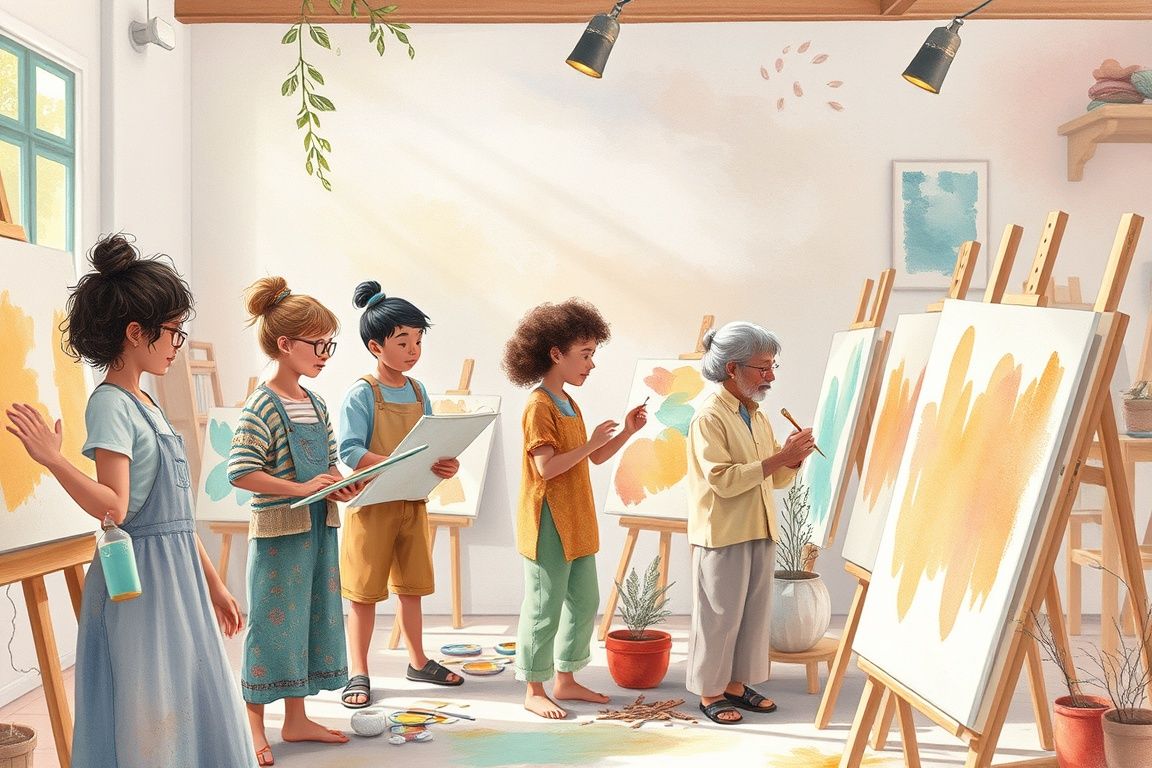Why It’s Worth It
Gain a deep understanding of color theory and its influences on art, enhancing your artistic creations.
Master texture perception to add depth and interest to your artworks, making them stand out.
Learn to integrate color and texture for harmonious compositions that captivate and engage your audience.
Your Learning Roadmap
Fundamentals of Color Theory
This module provides a foundational understanding of color dynamics, covering the color wheel, color relationships, and basic color schemes. Learners will explore how colors interact and the psychological impact they have on viewers. Frameworks from Josef Albers and Johannes Itten will be discussed to build a robust theoretical background. Color Wheel Basics Primary, Secondary, and Tertiary Colors Color Relationships and Schemes
Color Physics and Perception
This module explores the physics of color, including the behavior of light and pigments. Students will gain insights into how light interacts with surfaces to produce varying shades and illusions. Discussions include both the scientific and psychological components of color perception, enriched by frameworks discussed in the popular texts of the field. Light and Color: Physics and Psychology Color Perception in the Human Eye Environmental and Contextual Influences
Exploring Texture in Visual Arts
This module defines texture and its dual aspects: tactile and visual. Essential for creating depth and interest, texture plays a crucial role in artistic composition. Learners will discover various methods for creating texture with different mediums, supporting their exploration with examples from classic and contemporary works. Types of Texture: Visual and Tactile Creating Texture through Media Perception of Texture in Art
Integrating Color and Texture in Composition
This module focuses on the synthesis of color and texture to build dynamic and balanced visual compositions. It explains how these elements interact to form the overall visual narrative. Students will learn practical strategies for integrating both elements to enhance artistic expression, drawing on techniques from notable art theorists. Integrating Color and Texture Balancing Visual Weight and Harmony The Role of Contrast and Emphasis
Advanced Techniques and Case Studies
In this concluding module, learners dive into sophisticated methods for enhancing artistic expression with color and texture. Case studies of master artists are used to illustrate the successful integration of these elements. Experimentation techniques, including comparisons of digital and traditional methods, encourage creative innovation and individual style development. Techniques for Enhancing Depth and Dimension Analyzing Masterpieces Through Color and Texture Experimentation: Digital vs Traditional Approaches
What Users Are Saying
All You Need to Know
Join the Color Revolution!
Real-time interaction with course materials and AI assistance.
Customized learning at your own pace, from anywhere.
Instant feedback on questions and exercises for effective learning.
Dynamic learning through practical applications and examples.
In-depth exploration of color and texture with expert frameworks.
Comprehensive modules covering both theory and practice.

